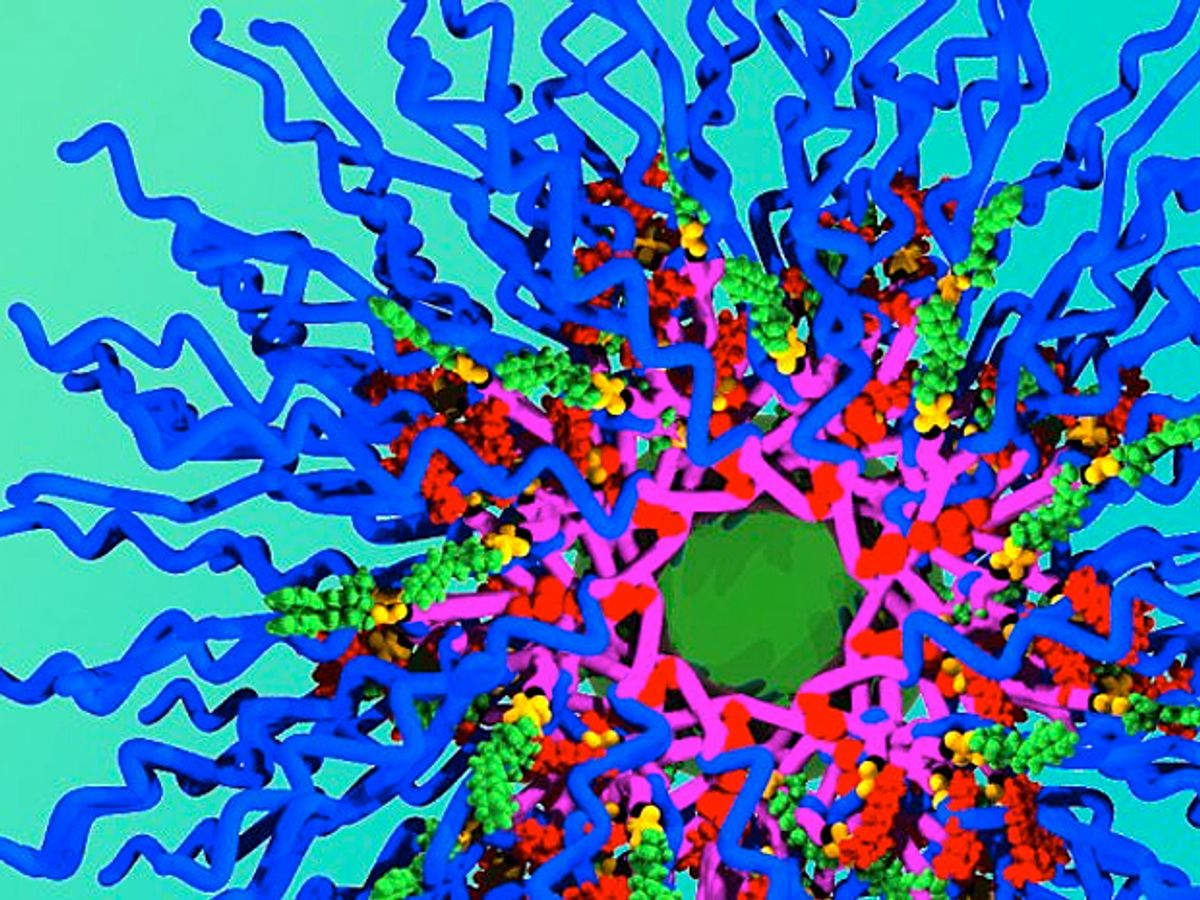Tiny particles capable of precisely targeting cancerous tumors with fewer side effects have been limited in their ability to deliver more than one or two drugs. MIT researchers have overcome that limit for the first time by building new nanoparticles capable of carrying three or more chemotherapy drugs.
Nanoparticles usually attach to drug molecules externally or encapsulate the drug molecules inside themselves. That has previously allowed researchers to make nanoparticles carry as many as two drugs simultaneously. But the MIT team built an entirely new type of nanoparticles with chemical building blocks already containing the drug molecules—a method that allows for precise control over the ratio of different drugs included.
"If I want a particle with five drugs, I just take the five building blocks I want and have those assemble into a particle," said Jeremiah Johnson, an assistant professor of chemistry at MIT, in a press release. "In principle, there’s no limitation on how many drugs you can add, and the ratio of drugs carried by the particles just depends on how they are mixed together in the beginning."

Each building block of the new nanoparticles includes the drug molecule, a "linking unit" to connect with other building blocks, and polyethylene glycol (PEG) to prevent the nanoparticle from breaking down inside the body.
The MIT researchers also included the drugs isplatin, doxorubicin, and camptothecin that are typically used to treat ovarian cancer by themsevles or in combination. They tailored each particle to contain the maximum tolerated doses of the three drugs and three specific release mechanisms. Cisplatin is released upon exposure to the antioxidant glutathione inside cells, camptothecin is freed upon exposure to cell enzymes called esterases, and doxorubicin's release is triggered by ultraviolet light exposure.
The triple-drug nanoparticles proved capable of killing ovarian cancer cells more effectively than the older nanoparticles capable of carrying just one or two drugs, as detailed in the 2014 April 11 issue of the Journal of the American Chemical Society. Johnson and his colleagues, including Longyan Liao, a postdoctoral researcher in his MIT lab and lead author on the paper, have already begun running animal tests with the new nanoparticles.
Next up, the MIT team is developing nanoparticles capable of carrying four drugs. The researchers are also working to tag particles with molecules that home in on tumors by interacting with the proteins covering cancerous cell surfaces. That could provide a targeting capability without the need for manual steering used in magnetically-guided microbots being developed independently for fighting cancer.
Jeremy Hsu has been working as a science and technology journalist in New York City since 2008. He has written on subjects as diverse as supercomputing and wearable electronics for IEEE Spectrum. When he’s not trying to wrap his head around the latest quantum computing news for Spectrum, he also contributes to a variety of publications such as Scientific American, Discover, Popular Science, and others. He is a graduate of New York University’s Science, Health & Environmental Reporting Program.



